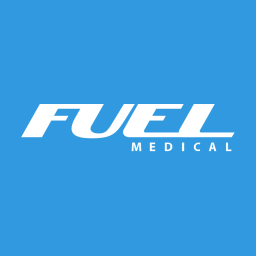The Employee Experience Starts with You
Onboarding needs to evolve beyond a checklist. We found that integrating new employees helps them understand their role, recognize how their accomplishments impact the organization and make connections with colleagues. Ask Fuel First answers an essential question about integration: How can you create an integration process that works for your organization and adequately supports new and transitioning employees?
Finding a way to engage and, hopefully, retain employees can be challenging, especially now amid the Great Resignation. Employees are changing jobs for increased career mobility, higher wages or just seeking more flexibility post-COVID, and voluntary turnover is likely to rise. Because there is more turnover in our organizations, we need to affect change. The face of this change is The Great Integration.
Integrating new hires into our organizations can help them feel connected and ideally reduce turnover rates. The first step in this process is to consider employees’ overall experience—not only during the onboarding process but throughout their experience at the organization. Every conversation, assignment, touchpoint, success, failure and interaction is part of the integration. It’s about helping employees identify their purpose, recognizing their accomplishments and facilitating networking opportunities.
Collaboration across roles and departments effectively meets individual and team goals and leverages expertise throughout the organization. It improves employees’ experience, enhances individual performance and strengthens essential work relationships. However, we typically leave connecting people and networking for transitioning employees as a do-it-yourself exercise. We’ve learned this past year that it’s our job to be intentional and lead the way in showing people how to build the connections that will help them thrive quickly.
How Does Integration Benefit New Employees?
Creating an integration program is highly beneficial for transitioning employees because they:
- Discover how their role impacts others in the practice
- Start to develop critical thinking skills to handle individual tasks more effectively
- Capitalize on connections to elevate team performance and refocus self-interests to achieve organizational goals
- Strengthen interpersonal relationships and collaboration
- Improve their chances of success
How can you Implement Integration Today?
For every new hire or employee shifting roles, you should focus their integration on purpose, accomplishment and one another. Here are some practical applications to use in your organization:
- Purpose: After sharing your organization’s values or mission, ask the employee what that means to them. Give the employee access to patient reviews. Set up interviews with colleagues to learn why a patient should choose your practice over the competition. Assign them tasks to complete that involve looking at your website to learn about your practice, allowing them to gain a better understanding of the services your offer.
- Accomplishment: Start by explaining the why before telling them how to perform a task. Check in with them frequently and ask them what they’ve learned. Keep the employee focused on outcomes or objectives rather than the task by asking, “What is the goal for completing this task?” Have them prioritize tasks with you at the start of each day and ask why they choose to do it that way. Have your new hire interview colleagues to learn how to form successful relationships.
- One Another: Help them build a network by setting up one-on-one lunches with colleagues they will work with frequently in practice. Assign them a buddy from a different department to connect with weekly. Please give them a list of questions while interviewing colleagues to learn how their roles connect.
Why is Creativity Key to the Success of Your Integration Program?
Be creative when you develop your own integration process. The goal is to intentionally guide new employees to network with others who will rely on them to do a great job. To do this, we suggest adding Performance Network Interviews to your integration process. New hires will be given a series of questions to ask their new colleagues which helps anchor those colleagues as a resource. When people connect personally, they are less likely to focus on mistakes and more likely to focus on intentions (assuming they’re good). Your employees will start to develop critical thinking skills because they will understand how their role fits into the big picture and how their performance will affect their network of colleagues.
You might have noticed that we mentioned employee interviews and networking several times throughout this article—it was intentional. Through working with audiology and ENT practices across the US, we found that new hires typically have less experience in health care, yet possess the right aptitude to perform well on the job. By fully integrating new employees within the practice, we found that they tend to stay longer. A valuable tool in the integration process is the performance network interview. New employees can interview coworkers to get a sense of what they do in the practice and how that relates to the new employee’s role. We encourage you to explore how integrating new employees and applying strategies, such as Performance Network Interviews, can improve the efficiency of your practice.
If you want to put the ideas in this article into practice, think about one new element you can incorporate into your onboarding process that will transform it beyond the traditional checklist. Then check out more Ask Fuel First articles and videos to learn about the employee experience.
